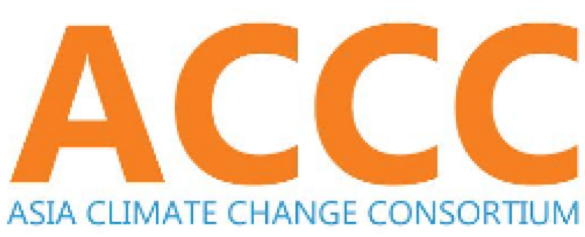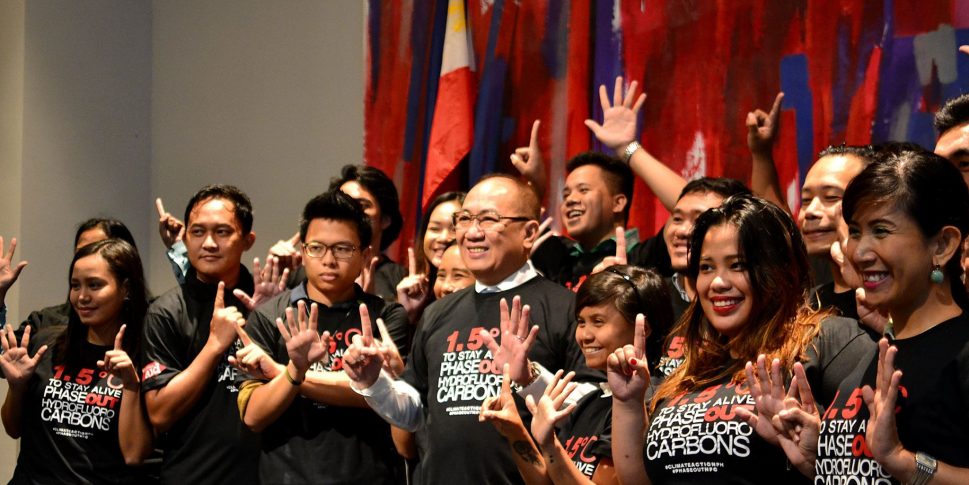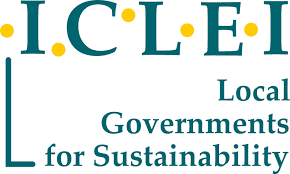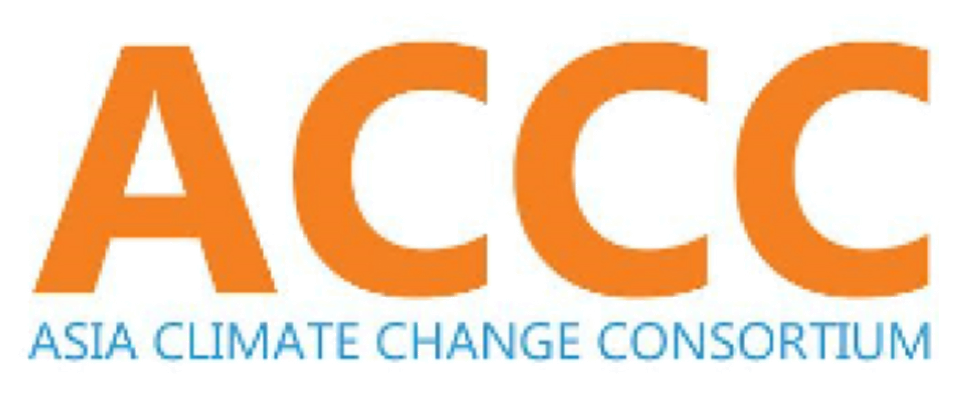Virtual Asia Clean Energy Forum 2020: Major Themes and Highlights
by John Leo Algo, Living Laodato Si (Philippines)
The current context
Addressing energy concerns is integral to mitigating global warming and climate change and attaining sustainable development. Attaining affordable and clean energy is identified as one of the UN Sustainable Development Goals (SDG 7). Currently, 63% of the Asian population has access to clean cooking, while 90% has access to electricity. However, only 17% of the global total final electricity consumption comes from renewable energy (RE).
An immediate yet just transition from fossil fuels, especially coal, to RE is imperative to limiting global warming to 1.5°C above pre-industrial levels by 2030, as stated in the Paris Agreement. Per Carbon Tracker, the world can only consume a carbon budget of 2810 GtCO2 to have a 50% chance of achieving the 1.5-degree target. At the start of 2020, only 495 GtCO2 is left, which will be exhausted in 11.5 years at current rates.
To meet the goals of the Paris Agreement, one coal power generation unit must be closed down every day until 2040. More than 80% of fossil fuel reserves must become stranded assets, including investments. As of 2018, 42% of global coal capacity is considered unprofitable. By 2040, 72% of coal plants are at risk of becoming stranded assets.
The Asia-Pacific region is the source of half of the current global emissions largely due to the emissions of China and India, yet hosts most of the nations at the highest risk to the impacts of climate change. The development of RE is far behind the expected level of use in the region, which is more noticeable when hydropower is excluded. While RE is growing in terms of capacity, its share is dropping among nations due to the rapid growth of energy demand.
Electricity comprises well below 20% of the regional energy consumption. However, the share of electricity is increasing, which is not only an indicator of a higher access to modern energy but also lower greenhouse (GHG) emissions. Energy consumption per GDP unit is also decreasing in Asia, which signifies a growing value of energy efficiency.
The Southeast Asian energy sector is poised to become a growing contributor to global warming pollution, with many countries considering adding coal-fired power plants to their respective fleets and struggling to promote the development of renewable energy (RE). The region is also characterized by significant growth of demand and use of natural gas, one of two areas in Asia.
With higher temperatures also comes an increase in demand for cooling technologies. Around one billion people need cooling for basic needs and services, with 600 million of them residing in Asia. However, a lack of proper cooling-related interventions places more than two billion people in Asia at risk, with 1.8 billion coming from the lower-middle-income sector.
Green financing
To limit global warming to 1.5°C above pre-industrial levels by 2030, around USD 7 billion a year is needed for climate and development investments, with USD 2.9 billion annually for low-carbon investments within the decade.
Between 2013 to 2017, funds allotted for sustainable finance has increased twofold, while international initiatives to promote green financing grew fourfold. The green bond market has also rapidly grown from USD 3 billion in 2011 to USD 895 billion in 2018, with half of this allotted for clean energy. With these developments, improved financing conditions helped drive down the cost of solar and wind energy to be cheaper than coal in two-thirds of the world. Costs for solar and wind energy technologies, including batteries, fall by 15-20% for every doubling in capacity.
Investments in the RE sector would not only result in lower costs of both production and generated energy, but also the creation of more jobs. IRENA reports that boosting investments in RE would create 42 million jobs worldwide by 2050, a fourfold increase compared to present levels. Investments valued at USD 152 billion in improving energy efficiency in buildings within Southeast Asia alone would create 2.4 million jobs. Sustainable cooling is identified as another key area for significant investments; an estimated USD 630 billion of annual economic assets and up to 59 million full-time jobs could be lost in Asia by 2030 without such investments.
Financial institutions such as TCFD and Black Rock are slowly becoming climate-conscious, which helps create a competitive environment within global and national economies. This in turn influences major corporations to adopt practices and pursue ventures aligned with current climate and sustainability frameworks.
Southeast Asia needs to double its investments by 2025-2030 relative to 2019 levels to achieve cleaner energy targets aligned with the goals of the Paris Agreement and SDG 7. Currently, half of energy investments in the region is on fossil fuels with carbon capture use and storage (CCUS), with the rest on renewables. Public spending on RE and energy efficiency would also help create more jobs as opposed to financing fossil fuels; for every USD 10 million spent, 75 and 77 jobs related to RE and energy efficiency respectively are created, in contrast to 27 jobs in the fossil fuel sector.
Countries and multilateral agencies have provided support for the development of RE technologies. For example, half of the USD 5 billion annual energy-related funding by the Asian Development Bank is allocated for cleaner energy projects, with the other half focusing on transmission and distribution-related initiatives.
Recovery from COVID-19 pandemic
The COVID-19 pandemic has forced changes to modalities for climate action and sustainable development, yet the urgency for addressing the climate crisis remains high. Delaying policy implementation to 2025 would result in an annual CO2 cut of 15.5% instead of 7.6%, a rate which experts deem as almost improbable to achieve. In comparison, the IEA has projected that an 8% decrease in CO2 emissions is expected for 2020, largely due to the pandemic.
A survey conducted by the ASEAN Center for Energy revealed that the transportation, industry, and commercial factors are among the most impacted sectors energy-wise due to COVID-19; these sectors collectively account for 80% of primary energy supply provided by fossil fuels. Around 68% of concerns regarding impacts on energy pertain to fossil fuels, and 16% on RE. Regarding the perceived impacts of the pandemic, 58% identified lower emissions, while 32% stated climate change benefits, which is considered a lower-than-expected level.
Reported most issued means for green finance in 2020 included pandemic bonds, sustainability-linked bonds, and green social and sustainability bonds. This presents an opportunity for co-benefits related to climate change mitigation and adaptation, averting loss and damage, and increasing the resilience of energy and other sectors to be included in recovery measures addressing the impacts of COVID-19 in the immediate and long-term scenarios.
The resilience of RE during the pandemic has been highlighted, with projections of global RE generation to increase by around 3 percent in 2020 according to the International Energy Agency (IEA). The relatively low marginal cost of RE made it more stable than fossil fuels, whose facilities could be shut down when prices are lower. With lower electricity demand due to the economic lockdown, power suppliers and distributors earned lower profits, especially in countries where fossil fuels dominate the electricity grid. In contrast, RE generation continued largely unaffected.
Partially due to this development, sustainable debt among Asian countries is increasing, with China having accumulated the highest debt. Furthermore, it has been reported that companies have not significantly changed their long-term strategies and goals despite the implications of COVID-19 for environmental sustainability, reflecting how they see the pandemic as a threat from which they can recover and return to their business-as-usual operations.
Moving forward, an online poll revealed that the ACEF participants considered enhancing energy sector resilience to future crises as the most important energy sector consideration for COVID-19 recovery. This is followed by implementing climate change mitigation technologies and achieving energy access for all and energy security. The last consideration, building energy infrastructure for economic recovery and growth, was noted during the opening plenary to have been the main consideration 20 to 30 years ago, a sign of growing concerns about sustainability and resilience of the energy sector.
Just transition to renewable energy and decarbonization
Identified energy-related vulnerabilities of Southeast Asia include a rapidly growing energy demand, the financial environment of the power sector, climate-related disasters, air pollution and GHG emissions from fossil fuel plants, and reliance on fossil fuels; the region is projected to become a net importer of oil and natural gas within the decade.
From discussions, priority areas for a just transition towards RE development include local job creation, improving air quality, meeting the growing energy demand, long-term resilience planning, and setting clean energy deployment goals through economic stimulus packages. Deploying RE systems must also exhibit resilience to climate change impacts and other characteristics aligned with principles for quality infrastructure investments, which is crucial for Southeast Asia, as well as small island developing states and other high-risk countries in pursuit of sustainable development. Off-grid electrification must also be implemented, especially in archipelagic states.
Experts specifically stated that governments have the responsibility of creating an enabling environment for RE development. Policies that would contribute to this goal include carbon pricing for spurring decarbonization technologies, more effective feed-in tariff mechanisms, and transparency-promoting measures to allow for developing pipelines of bankable clean energy projects that could help mobilize private sector resources. With the onset of the COVID-19 pandemic, governments must also overcome factors such as the crisis’s economic impacts, cheaper oil prices, and bureaucratic inefficiencies in enacting such transition.
However, the financial sector must also play its role in spurring action through actions such as accounting for the risks associated with a transition of assets from fossil fuels to RE, including technological, market, reputational, and physical risks. While natural gas is being considered as a key part of the transition from coal to RE, some experts argue that many natural gas projects suffer from GHG emissions higher than RE and the likelihood of methane leakage, making them a risk to become stranded assets.
Relative to neighboring Asian countries that are more capable of scaling-up deployment of technologies or managing high shares of variable RE, the Philippines remains in the stage of initially attracting investors and implementors for RE-related projects. Furthermore, coal remains the cheapest energy source in the country as of 2019, albeit without accounting for externalities.
Foreign assistance (coupled with proper governance frameworks) is necessary for upscaling RE development in the Philippines, aligned with the country’s stance in international climate negotiations. For instance, USAID is planning a 5-year, USD 35 million plan for developing a 500 MW generation capacity in the Philippines, which would attract and utilize USD 750 million worth of private investments.Efforts for pushing just transition and RE development are being hindered by the COVID-19 pandemic. Delays in RE project development are caused by disruptions in the supply chain; the most notable of this is the impact of solar growth due to impacts on China, the global leader in producing solar panels. The lower oil and natural gas prices partly caused by the lockdown could also result in higher demand for them. Fossil fuel lobbying is also slowing down immediate action, as oil and gas majors have invested USD 50 billion in projects undermining climate targets and threaten shareholder returns since 2018, per Carbon Tracker.
Just transition also applies to the overall decarbonization of systems. More than half of the world’s new buildings are constructed in Asia annually, which comprises 25% of overall energy consumption and makes it a key sector for low-carbon development. Industrial decarbonization comprises 25% of global GHG emissions, yet the transition in this sector faces technological and infrastructural challenges. These include attaining high temperatures, which is difficult with current RE technologies, complex industrial processes that add difficulty to transitions, and costly rebuilds and retrofits for newer technologies.
Moving forward on the road to COP26
As the host of COP 26, the United Kingdom government will focus on five campaign themes leading up to the conference: adaptation and resilience; nature-based solutions; transition to RE; shifting to zero-emission vehicles; and climate finance. These are in support of higher ambition and achieving net-zero emissions, which could influence business certainty for long-term planning, investor confidence, and attaining co-benefits for overall sustainable development.
The COP 26 envoy also denounced geoengineering, being quoted as saying “We don’t need technology that has not been proven to achieve the Paris goals”. Instead, he mentioned that technologies to address the climate crisis already exist; it comes down to upscaling these solutions through political and regulatory mechanisms.
An example of an existing nature-based solution was developed by Ocean Life Foundation. Its initiative involves the development of mineral accretion technology, which features electrolytic deposition of limestone from seawater. Combining this with pre-fabricated rebar cages for seeding corals or mollusks allows for coral reefs to grow 4-5 times faster within a low-voltage electrical field. Having been deployed in the Marshall Islands, this solution allows for stronger coastline and sand beach protection, the preservation of coral reefs that serve as habitats for marine life, and lower costs and carbon footprints compared to building sea walls against sea-level rise and storm surges.
In support of its claims of championing climate finance, the UK reported a 43% reduction in GHG emissions and a 75% economic growth since 1990. It plans to provide official development assistance (ODA) worth £11.6 billion for climate-related projects between 2021 and 2026, which is a sign of its commitment to fulfilling the USD100 billion annual financing by developed countries under the Paris Agreement.
Current NDC targets are not enough to achieve the 1.5-degree target; they would result in a projected temperature increase of 2.9 to 3.4°C by 2100. Mitigation targets must be raised to ensure a 45% decrease in CO2 emissions by 2030 from 2010 levels and a 100% decrease by 2100. While countries such as Bangladesh, China, India, Indonesia, Pakistan, and Vietnam have achievable NDC targets by 2030, higher ambition is evidently needed for their climate action strategies as well as most nations in Asia and globally.
Aside from RE development, energy-related mitigation options that must be focused on include improving energy efficiency, full electrification, and universal access to clean cooking. Energy efficiency, in particular, has been largely untapped in Asia, despite being considered as the “cheapest” fuel that must be capitalized. While policies are insufficient to achieve universal access to clean cooking technologies, Asia is currently on track to achieve full electrification by 2030.
An example of improving electrification involves RTI International providing 205 units of household lighting for 8000 internally displaced peoples, and solar energy for four rural health units housing 22 thousand patients in Marawi City since the 2017 siege. This endeavor was supported by USAID and included activities such as database recovery and the development of a resilience compliance plan for the Lanao del Sur Electric Cooperative, strengthening power system resilience, and youth training for maintenance of energy systems.
Approaches for energy-related options in the NDC could be integrated with strategies for achieving SDG 7, emphasizing co-benefits that could generate more investments and interest in developing cleaner energy technologies. Models for implementation involve the following: transition to clean technologies for cooking, transportation, and buildings; subsidies for transitions to cleaner fuels; setting higher targets for RE share; increased investments on demand-side measures; and global convergence towards energy-efficient lifestyles.
Several experts support the use of carbon capture, utilization, and storage (CCUS) technologies for scaled-up implementation. Representatives from the UK government argue that the deployment of 2000 large-scale CCUS utilities could help reduce 12-14% of CO2 reactions to limit global warming to 1.5°C above pre-industrial levels. A lack of CCUS would increase power sector costs related to achieving climate targets by 40 to 128%. In support of its development, the UK is the largest multilateral ODA investor, allocating £70 million since 2012 for ODA-eligible countries. Funded activities include feasibility studies, training sessions and workshops, and piloting CCUS technologies in Indonesia, China, Pakistan, Bangladesh, India, Vietnam, and Mongolia, in partnership with ADB.
Identified priority sectors between 2035 to 2050 include coal-fired power plants, bioenergy, iron and steel, cement, and hydrogen production. CCUS is necessary for retrofitting Asia’s coal plant fleet, with an average age of 13 years, while suitable geological sites are being identified to host CCUS facilities next to oil and natural gas infrastructure in Southeast Asia.
Nonetheless, they agreed that technologies for achieving low-carbon or even net-zero emissions development already exist, but political forces limiting or prohibiting their scaled-up use must be overcome. The IEA Executive Director also stated that nuclear power is being considered a part of Southeast Asia’s energy development scenarios. #





 c/o Rice Watch Action Network
c/o Rice Watch Action Network